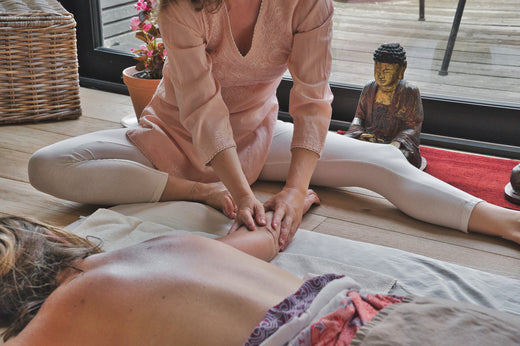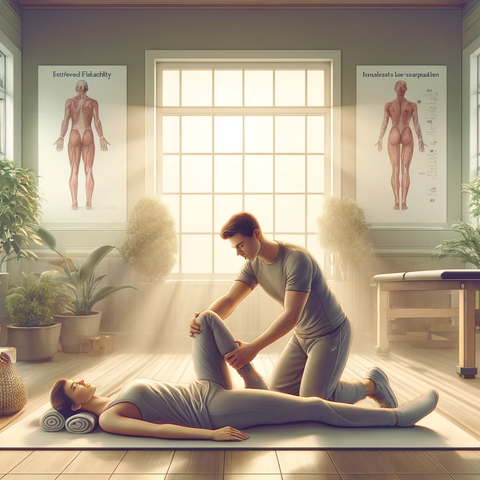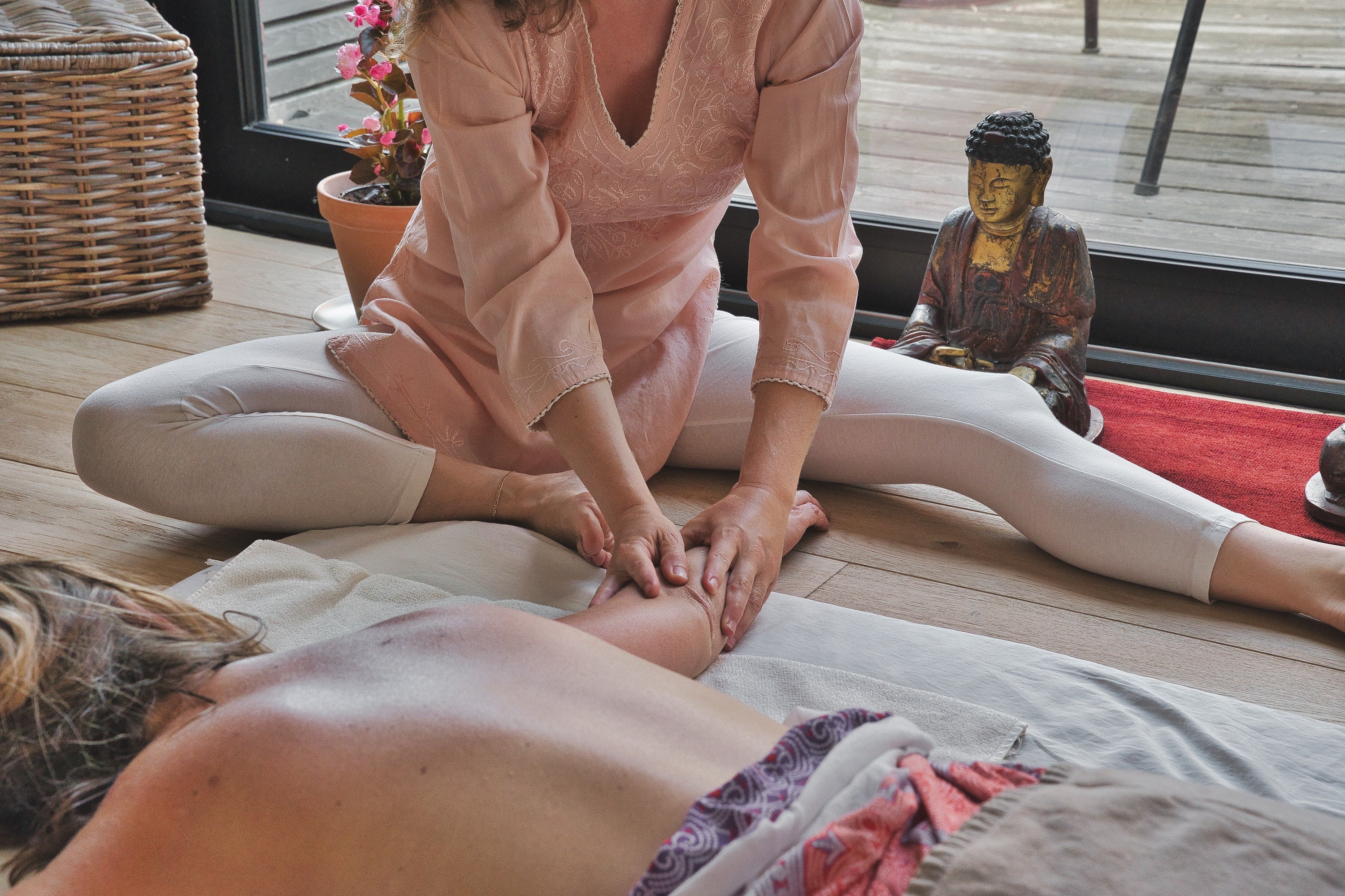Contents (Jump to a section)
Benefits of Assisted Stretching: Why You Should Try This Technique Yourself!

Are you suffering from chronic pain, achy joints, and sore muscles? Then, you need to read this article to learn how to alleviate these nagging pains with an accommodating type of stretching!
The benefits of assisted stretching are proven to help alleviate tight muscles and stiff joints by improving circulation. But, that’s not all. Assisted stretching boasts quite a few more benefits that you should not pass up, especially if you’re an athlete or suffering from chronic pain issues.
We’ll cover these benefits in great detail throughout this blog post. So, if you’re interested in learning more about assisted stretching and what it can do for you, continue reading below.
What is Assisted Stretching?
As the name suggests, this is a type of stretching that utilizes assistance - sometimes another person. Or, sometimes, tools and modalities. Either way, the outcome is that you’re able to incorporate stretching that you could otherwise not do alone.
Using this form of stretching can help manipulate your body into deeper stretches and more varieties of movement that may have been limited or difficult to accomplish on your own. As you can imagine, this contributes to substantial benefits…but what exactly can you expect from making this type of stretching a part of your regimen? We’ll explain below.
What are the Benefits of Assisted Stretching?

So, what are the benefits of assisted stretching? From enhancing mobility to prevent injury and targeting muscle tightness to reduce pain, assisted stretching boasts outstanding benefits. Find out more about these obtainable benefits below!!
Enhances Mobility
Strengthening the body is crucial for injury prevention. Assisted stretching simplifies the process through a broader range of movements, eliminating restrictions faced when stretching alone. It enhances mobility, focusing on joint and muscle well-being. Assisted stretching is effective for reducing the risk of injury associated with muscular imbalances or weak muscles.
Improves Athletic Performance
Improving athletic performance is a highly sought-after goal for athletes. And this is much easier when you’re more mobile! Not only can assisted stretching better aid in reducing soreness and risk of injury, but it can also boost energy, improve sleep, strengthen the core, and target poor posture. All of these factors are crucial for enhanced athletic performance - regardless of sport.
Progresses Flexibility
Though the two tie together, flexibility and mobility are not the same, but both are incredibly beneficial for physical health. Mobility is the capacity and strength needed to carry out movements freely. Flexibility is the ability to perform different ranges of motion without pain.
Assisted stretching is an excellent tool for pain-free movement to reduce the risk of injury. This is because assisted stretching challenges the body to move smoothly without pain. In addition, by improving flexibility, the joints are strengthened in lengthier ranges of motion, which helps to decrease the risk of injury.
Decreases Stress
Stress can result in stiff muscles, causing discomfort and pain. That is because stress is closely tied to muscle tension. If the tension is not released, the muscles remain tight. However, through assisted stretching, the muscles release tension and stress buildup, encouraging calm and an improvement in overall well-being.
Targets Muscle Tightness
Various factors can cause muscle tightness, including a sedentary lifestyle, stress, and overexercising.
Assisted stretching targets muscle tightness by releasing tension in the muscle through safe stretching maneuvers. If the muscles remain tight, it can cause further pain and discomfort, restricting movement and increasing the risk of injury.
Speeds Up The Recovery Process
When there is a lack of blood flow or circulation of vital nutrients to the muscles and joints, soreness and pain can result post-exercise.
To combat these issues and speed up the recovery process, assisted stretching loosens up the muscles and joints to improve circulation. A steady flow of circulation provides vital nutrients to the muscles. This, in turn, helps the muscles heal faster. On the other hand, minimal circulation caused by tight muscles and joints prevents these nutrients from reaching the muscles, which causes a slower recovery process.
Who Should Look Into Assisted Stretching?
We’ve gone over the outstanding advantages of using assisted stretching, but who would benefit from it? If you’re curious about trying assisted stretching, continue reading!
Athletes Who Wants to Increase Performance
The search for lifestyle adjustments and methods to improve athletic performance is ongoing for athletes. And assisted stretching is a safe, healthy, obtainable technique that can do just that!
Movements through your respective sport or activity will come more naturally and effortlessly. Recovery post-workout or game will be quicker. The risk of injury will be heavily reduced. If you take your sport seriously and want to perform better (or keep playing injury-free), consider assisted stretching.
People Suffering From Chronic Pain
For people suffering from chronic pain, assisted stretching can be a proactive tool to relieve discomfort temporarily. For some, it can even replace prescription medications after doctor approval, thanks to its efficiency in relieving pain.
Inactive Individuals
For individuals who live an inactive or sedentary lifestyle, like sitting at a desk all day, assisted stretching can be incredibly beneficial. Muscular imbalances, injury, stiffness, and soreness in the joints and muscles can result from a lifestyle absent of movement or activity. Assisted stretching releases tension in these tight muscles and joints, relieving stress and pain.
How Can You Reap the Benefits of Assisted Stretching Yourself?
Now that you know what assisted stretching is and what it does, you may wonder how you can get started reaping the stretching benefits as soon as possible. There are a few options to consider - either get professional treatment or take matters into your own hands.
Get a Professional Stretch From a Provider Near You
Receiving stretching treatment from a local provider is key to assisted stretching benefits. A skilled practitioner can tailor sessions to your needs. Find professional stretching at chiropractors, physical therapists, or massage therapists' offices. Note, it can be costly, especially with multiple weekly sessions, and attending appointments can be a hassle.
Invest in Your Own Assisted Stretching Equipment
A more affordable and convenient option to consider is buying flexibility equipment. This easy-to-use assisted stretching tool makes it easy to stretch whenever and however you want in the comfort of your home or on the go.
CastleFlexx’s flexibility equipment offers full body stretching capabilities, so you can incorporate active and passive stretching to cater to your needs. Whether you’re targeting issues like chronic pain, shoulder impingement, or plantar fasciitis, investing in this assisted stretching tool will be a complete game-changer in physical health and performance.
EStablish a Consistent Routine
A consistent routine should be established to see results and benefit from assisted stretching. It is recommended to incorporate stretching at least twice a week. If you are an active individual, this may increase to recuperate the body and speed up recovery between training sessions.
Incorporate Effective Movements
To receive the best stretching benefits of assisted stretching, you must cater your stretching routine to your goals. For example, if you suffer from tight hip flexors, you wouldn’t focus your sessions on your upper body. Instead, to target those tight hip flexors, you would need to incorporate stretches that engage the hip flexors and lower back muscles, which are connected to the hip flexors.
Hold The Stretch
Proprioceptive neuromuscular facilitation (PNF) is a frequently used technique in assisted stretching. It passively stretches the muscle to encourage flexibility and range of motion improvements.
Using a wrist stretch as an example, the wrist would be stretched to its normal range of pain-free motion. Pause for 8-10 seconds. Then, the wrist would be stretched a little further and held there for 10-15 seconds before returning to the starting point. This would repeat 3-5 times before moving on to the next stretching exercise.
Drink Plenty of Water
If muscles are dehydrated, stretching can prove to be more difficult than it needs to be. This is because muscles need water to flex and contract properly. Ensure to drink plenty of water daily so your muscles can be effectively stretched and reap the benefits of assisted stretching!
Get a Good Nights Rest
Though assisted stretching can be productive in improving recovery, without a good night's rest, your body won’t be able to recover fully. Sleep plays a vital role in recovery. Getting a good night's rest will help your muscles and joints heal. This is necessary for you to reap the stretching benefits of assisted stretching so your muscles can obtain improvements in mobility and flexibility.
Ready to Experience a More Mobile, Pain-Free Lifestyle?
Relieve chronic pain, boost athletic performance, and prevent injuries by incorporating assisted stretching into your routine. Skip the costly visits to a massage therapist or chiropractor; achieve the benefits at home with CastleFlexx’s equipment. Customize your routine with CastleFlexx’s easy-to-use stretching tool!
Key Takeaways
:Assisted stretching, as detailed in the article, is a transformative approach to enhancing physical health, especially for athletes and those suffering from chronic pain. It not only broadens your range of motion and improves flexibility but also offers critical benefits such as boosting athletic performance, reducing stress, and accelerating recovery.
By incorporating assisted stretches into your routine—with or without professional help—you can effectively target muscle tightness, improve mobility, and lead a more active, pain-free lifestyle. Whether you opt for professional sessions or invest in your own equipment, the key is consistency and personalization of your stretching routine to your specific needs.
